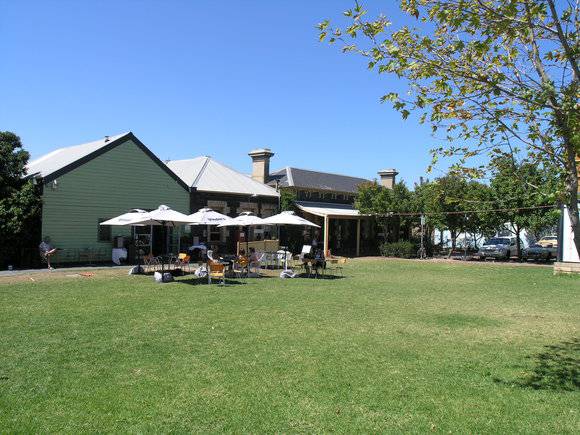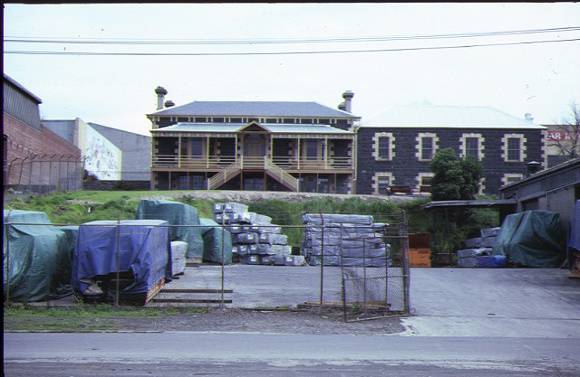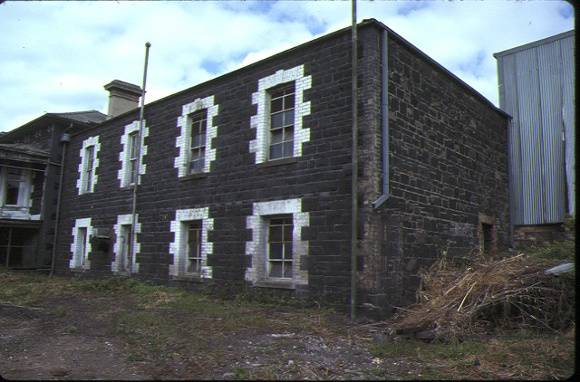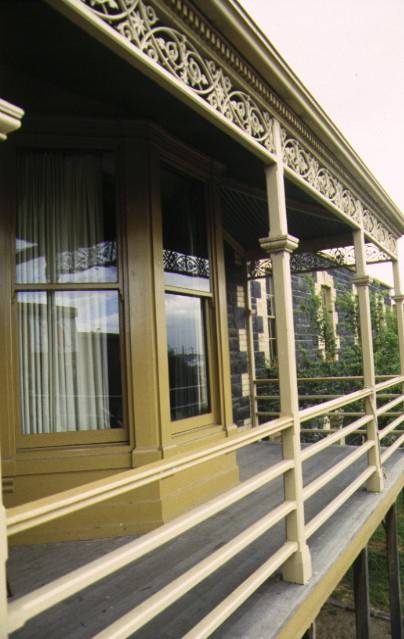| Back to search results » | Back to search page » |
|
HENDERSON HOUSE
Other NamesFOOTSCRAY AMPHITHEATRE , FOOTSCRAY ARTS CENTRE , FOOTSCRAY COMMUNITY ARTS CENTRE , FOOTSCRAY COMMUNITY ARTS CENTRE , GALLERY , Lemprieres Building , ARTS CENTRE Location43 - 45 MORELAND STREET FOOTSCRAY, MARIBYRNONG CITY
File Numberpl-he/03/1069LevelRegistered |
|
Statement of Significance
What is significant? The township of Footscray developed at the site of the first punt
across Saltwater (Maribrynong) River, which allowed direct travel to
the west from Melbourne from 1839. The area developed as an industrial
centre in the 1870s and this resulted in the construction of factories
particularly along the river. A number of Melbourne's more offensive
industries, such as meatworks, were established in Footscray and in
surrounding regions. Between 1870 and 1872, Samuel Henderson occupied,
and then owned, a curing and slaughter house on the Melbourne Road,
which had been established in the late 1860s by William Smith, ham
curer. In 1872-3 Henderson relocated his operations to new premises he had
built in a convenient location between Maribrynong Street on the west
bank of the Saltwater River and Moreland Street. The extensive complex
of buildings was constructed around a courtyard and consisted of a
house, a main factory building and other associated buildings,
including a boiler house and chimney. A lithograph, executed by S. T.
Gill in 1873, records these buildings as well as a formal geometric
garden which extended down to the river front. The main buildings were constructed of coursed rubble bluestone, with
cream brick dressings as quoining around openings, and had slate
roofs. The Italianate house, sited to face the river, was designed
with an elevated verandah, a central entrance flanked by polygonal
bays and a basement below. By 1874 Henderson had sold the property and it has since had a number
of owners and uses. Swallow and Ariell, biscuit manufacturers,
occupied the site from the 1920s, and Lempriere and Company Limited,
metal merchants, from the late 1950s. Many of the buildings were
demolished in the late 1960s and the residence and adjoining curing
building remain. The Footscray City Council purchased the site in the late 1970s and
it has been adapted for use as the Footscray Community Arts Centre.
How is it significant?
Why is it significant? Henderson House is of architectural significance as a rare and partly
extant example of a combined residential and industrial complex.
[Online Data Upgrade Project 2007]
Henderson House was constructed in Moreland Street, Footscray on
the Saltwater (Maribrynong) River in 1872-3 for Samuel Henderson.
Known as Henderson's Piggery, it was part of an extensive quadrangular
complex which included a factory for ham and bacon curing, and an
associated residence. The house and attached curing works building
remain from this original complex.
Henderson House, Footscray is of historical and architectural
significance to the State of Victoria.
Henderson House, Footscray is of historical significance for its
association with the development of principal river frontages for
industrial use in Victoria in the nineteenth century. It is a rare
surviving example and is illustrative of the development of this
location in Melbourne as a busy industrial centre and, in particular,
as the selected location for such offensive industries as meatworks.
Group
Residential buildings (private)
Category
House







